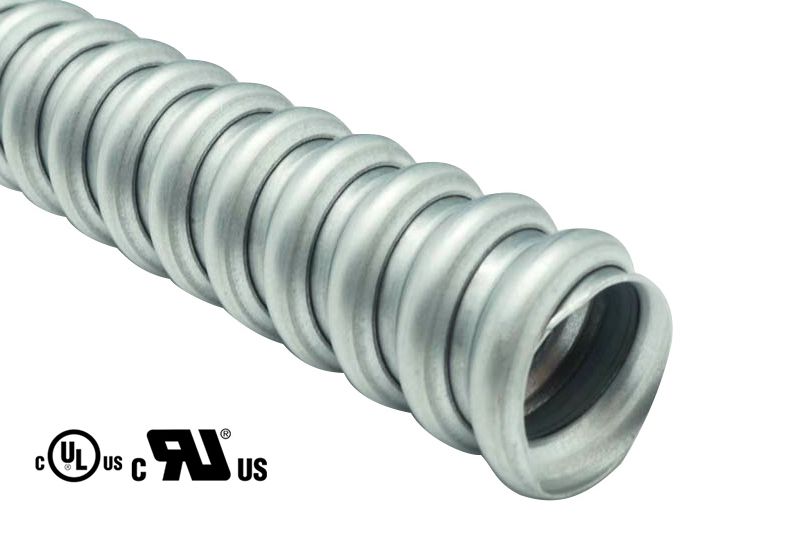Flexible Metal Conduit, is heavy-duty galvanized steel tubing that is installed with threaded fittings. It is typically used outdoors to provide protection from damage and can also provide structural support for electrical cables, panels, and other equipment. Flexible metal conduit is sold in 10- and 20-foot lengths and has threads on both ends.
Flexible Metal Conduit
Intermediate metal conduit, or IMC, is a thinner, lighter-weight version of rigid metal conduit and is approved for use in all of the same applications as RMC. Because IMC is lighter and easier to work with than RMC, it is more common in new construction.
Wire ducts protect and route electrical wires. It can be made from many materials, including metal, plastic, fiber or calcined clay. There are flexible and rigid catheters. The type of conduit used is determined by national and local regulations through wiring regulations.
By analyzing the wiring, you can determine when to use a flexible metal conduit instead of a rigid conduit. Flexible metal conduits typically range in diameter from 3/8 to 4 inches, but are typically ½ to 3/4 inches. It is mainly used where rigid catheters are difficult to bend because flexible catheters can bend.
Although flexible conduits are easier to work with than rigid conduits, it offers less protection for the conductors it carries. Bending a rigid conduit can be an arduous task so it is often preferable to opt for the flexible variety. Being a metal conduit, it has an advantage over PVC conduits which cannot bend. It may also serve as the grounding path although some local codes may require that you also run a green grounding wire.
As a Flexible Conduit Factory, let us tell you the Basics of flexible metal conduit.
Flexible metal conduits are made from steel or aluminum by coiling a self-interlocking ribbed strip of the metal. This forms a tube. The diameter of this tube can vary and different end applications call for different diameter tubes. Wires are pulled through this tube and are thereby protected from damage, both internal and external.
The tubing is flexible and can bend to fit your installation application. Unlike rigid conduits where you either have to manually bend the conduit to a fixed position or buy a pre-bent conduit, the flexible metal conduit can change its shape as you install it and as repairs or changes need to be made. The word flexible in its name may refer to its ability to flex in a given situation, but it also can refer to the flexibility it offers in your installation.
Short segments of FMC are called whips. You often find these as circuit pigtails between junction boxes and fixtures. A suspended ceiling is an excellent application for a flexible metal conduit whip. Whip assemblies are available for sale and can save you time when you need several of these pigtails.
Flexible metal pipes are flexible metal conduits used for line protection.
The material of the flexible metal pipe is: the outer layer is wound by hot-dip galvanized steel strip, and the inner wall is an insulating resin layer.
Characteristics of flexible metal pipes:
1. The outside of the flexible metal tube is wound by a metal band, so it has excellent flexibility.
2. The outer metal strip of the flexible metal tube has corrosion resistance, tensile resistance and wear resistance.
3. The inner wall of the insulating resin layer of the flexible metal tube can withstand high temperatures.
Location of Installation:
Flexible metal conduits are primarily used in dry applications although FMC is available with a UV resistant polymer that makes it watertight. Appropriate liquid tight fittings are required when using this type of conduit in a wet application.
Flexible metal conduits can be installed in most of the same places that rigid conduits are installed.
Our company also have Amored Optical Fiber Cable for sale, welcome to consult us.

评论
发表评论